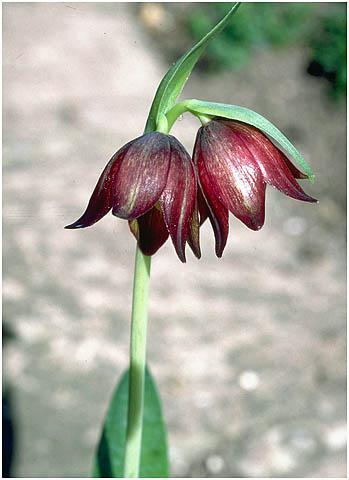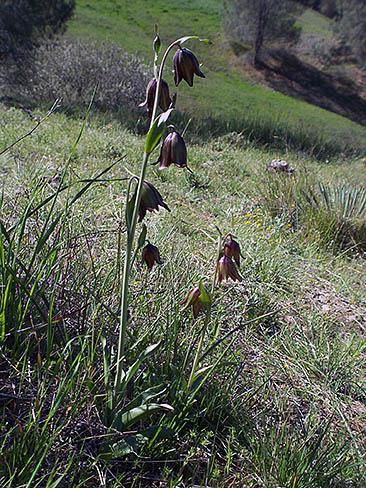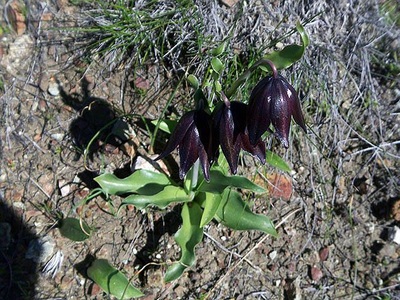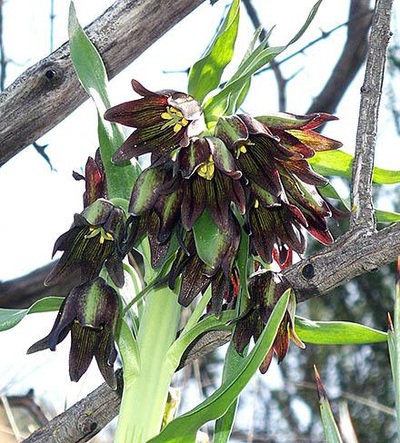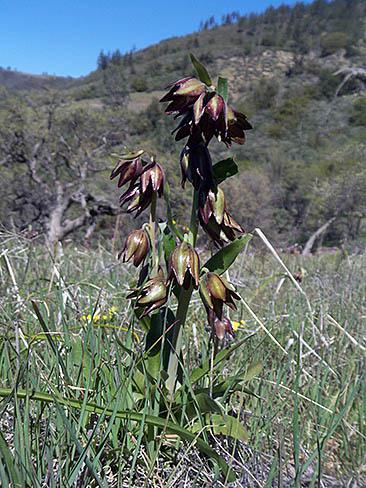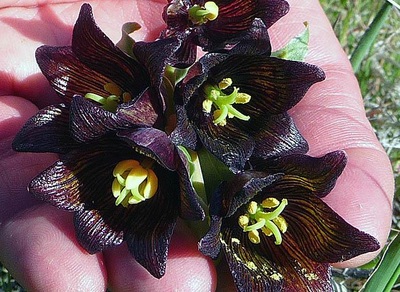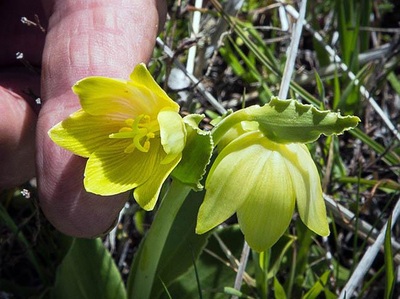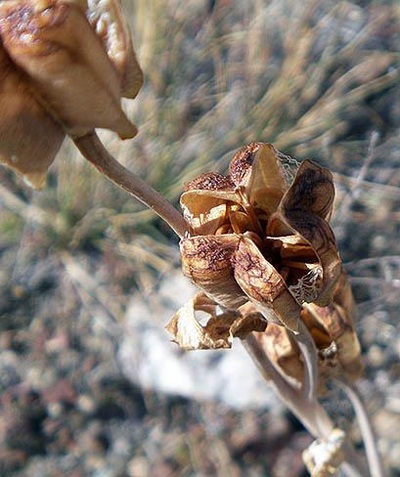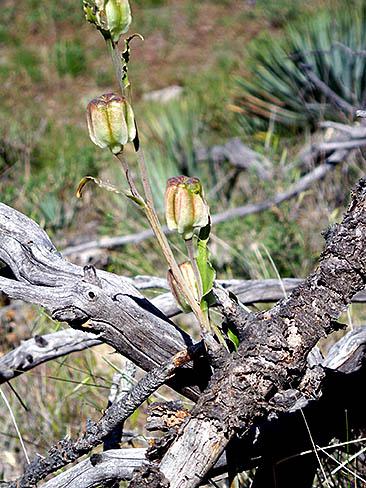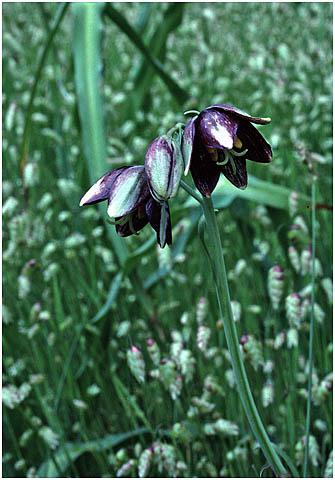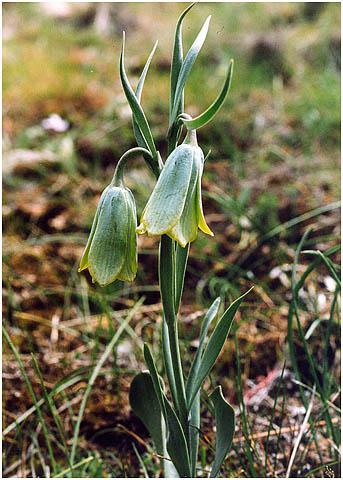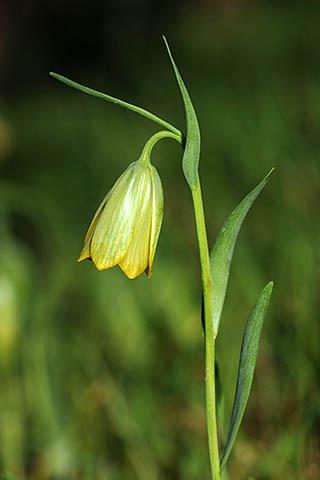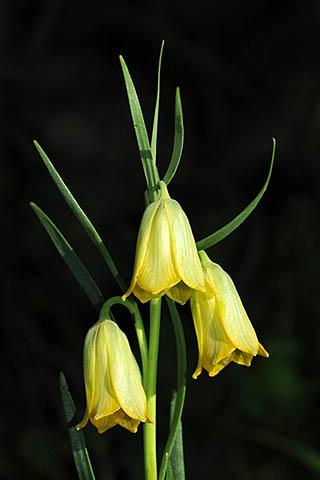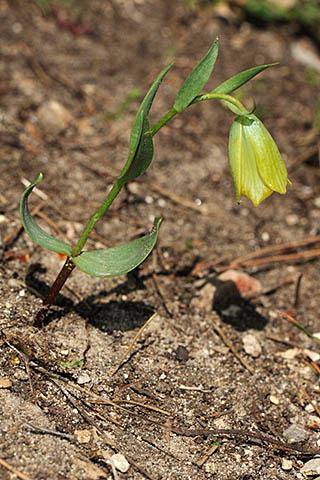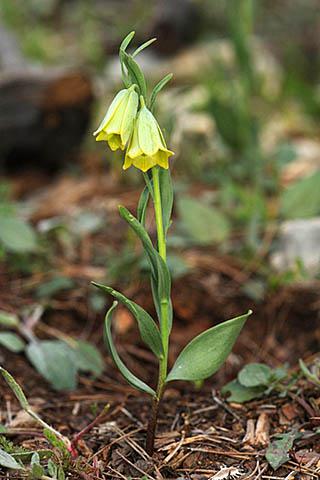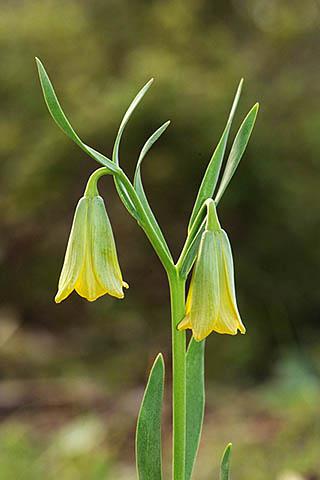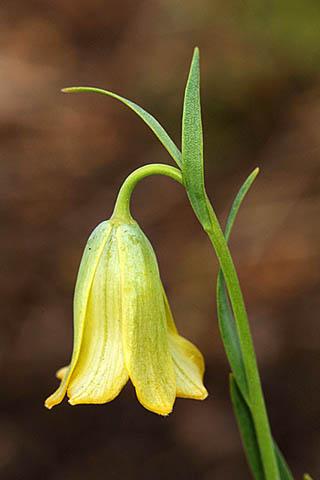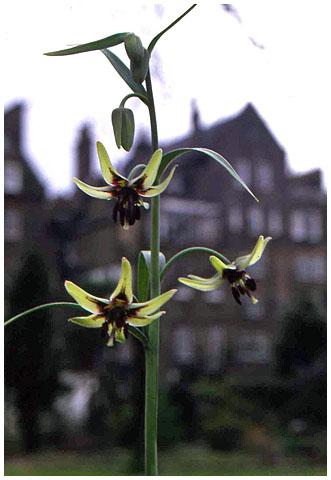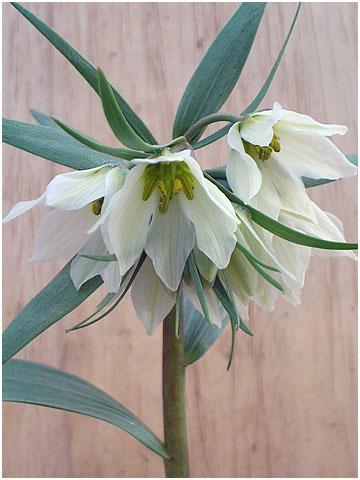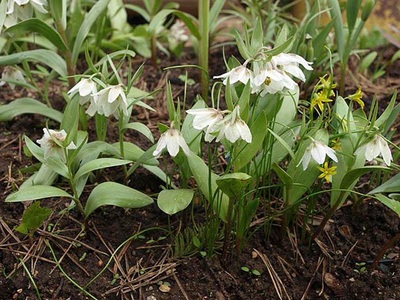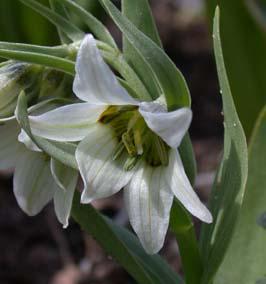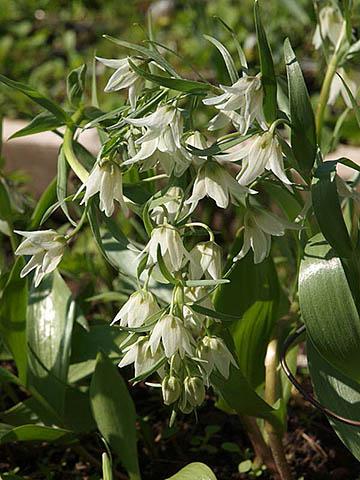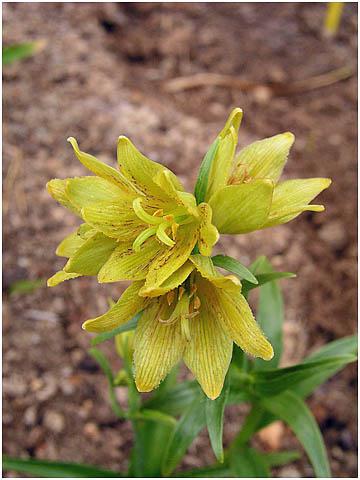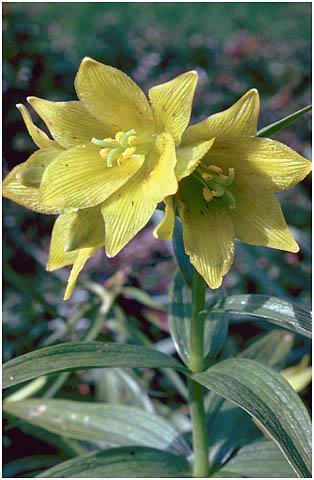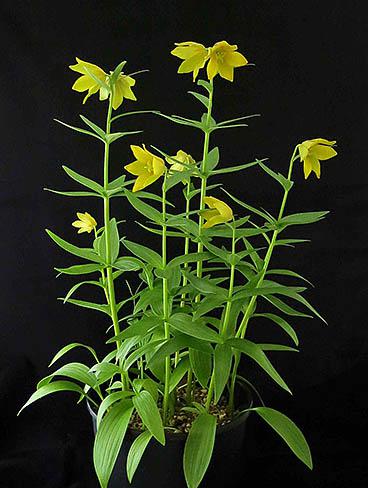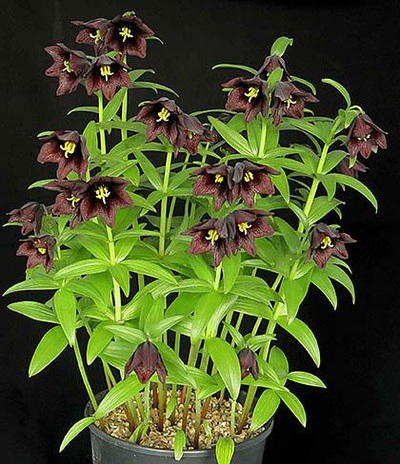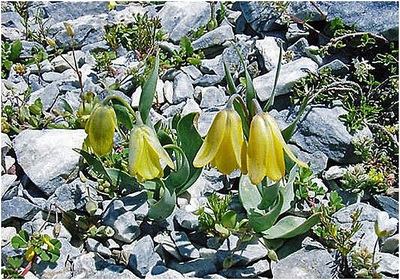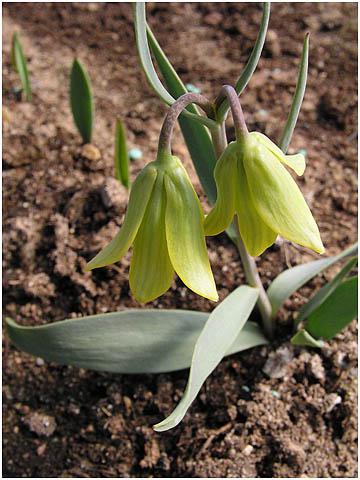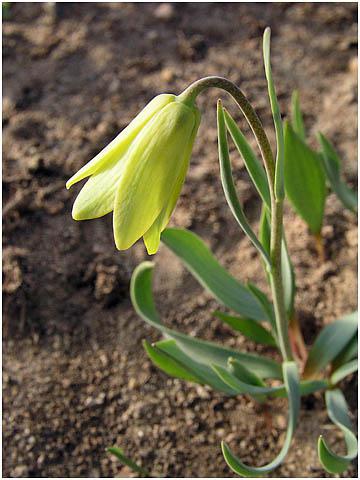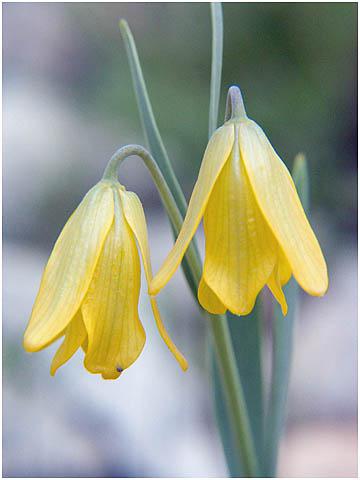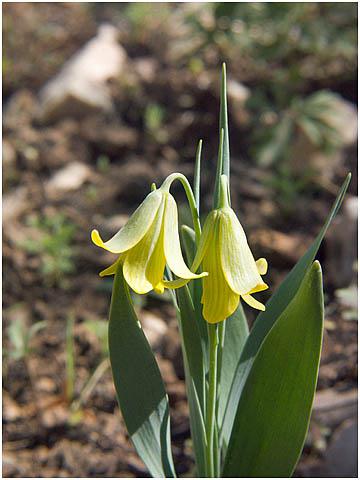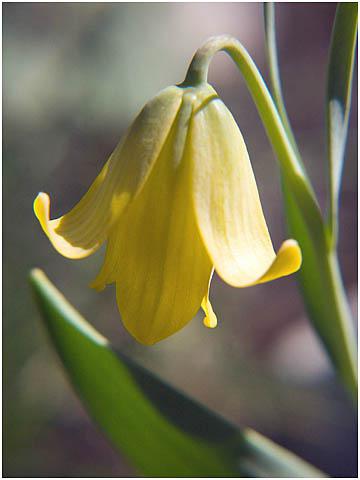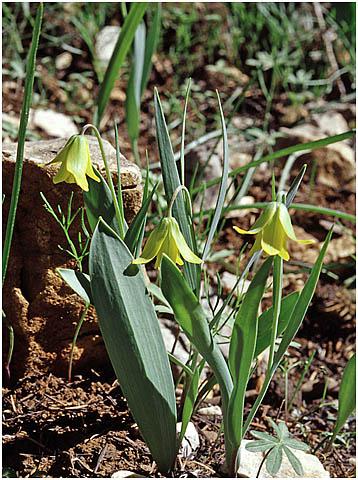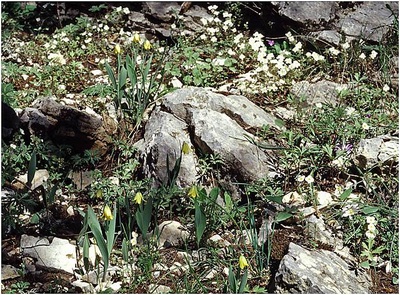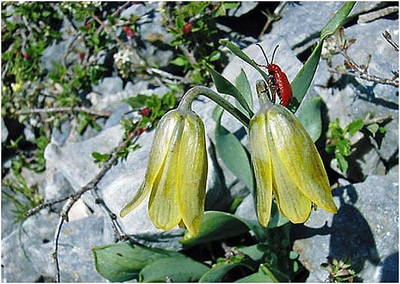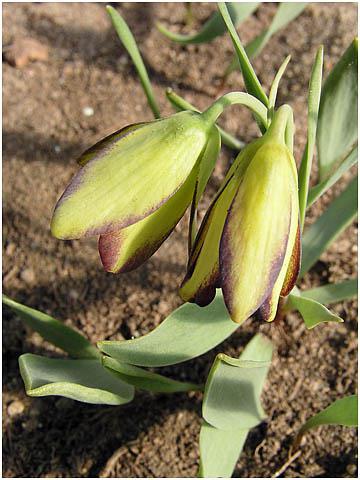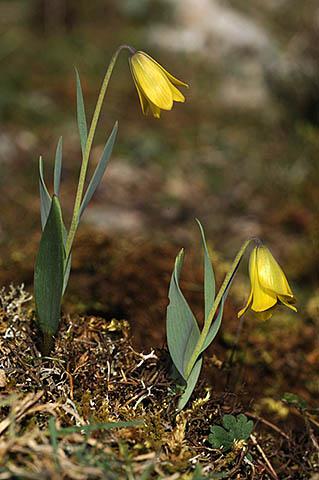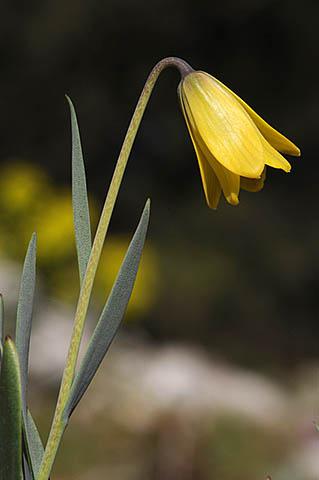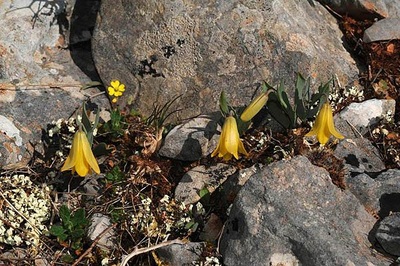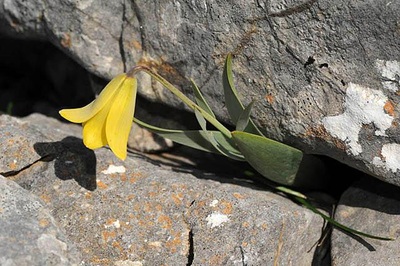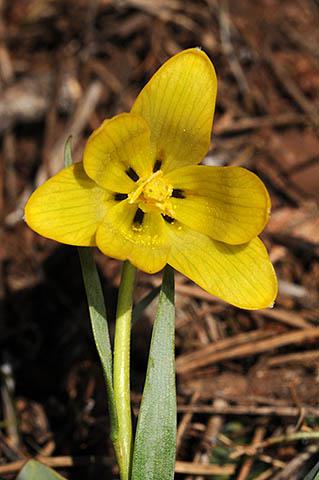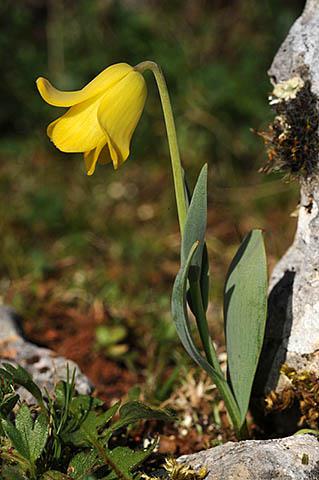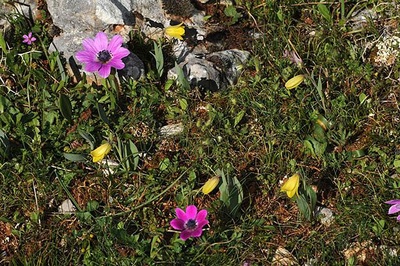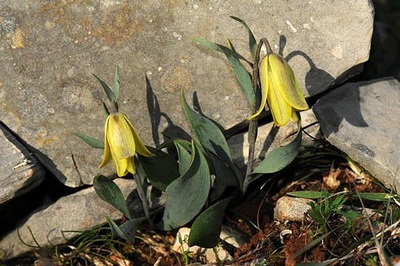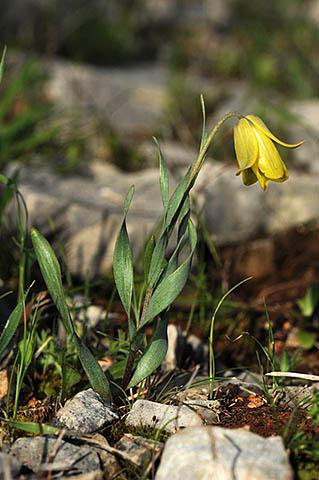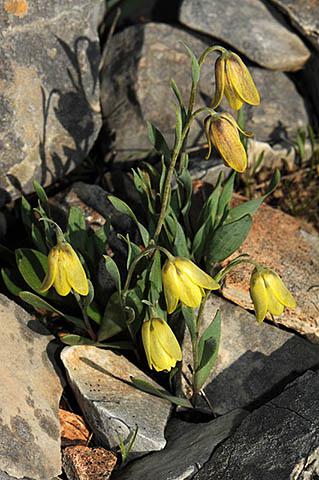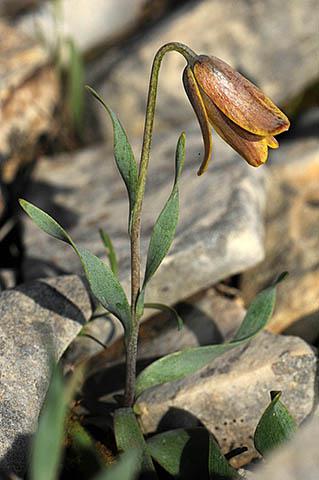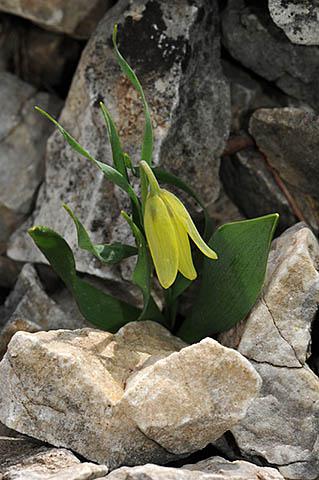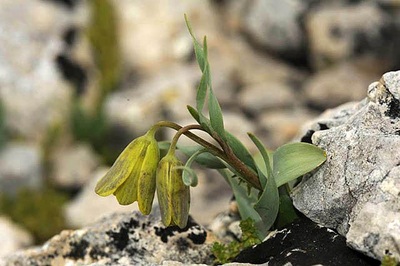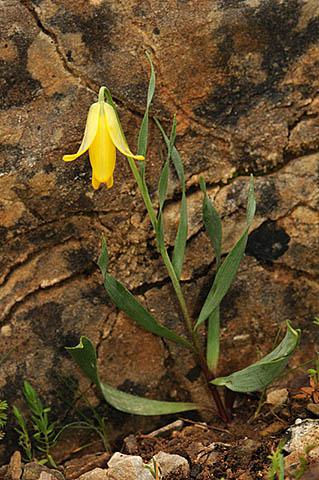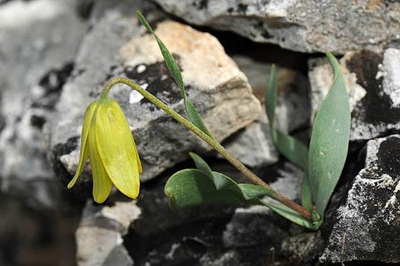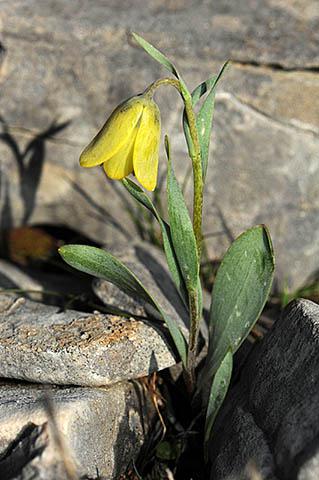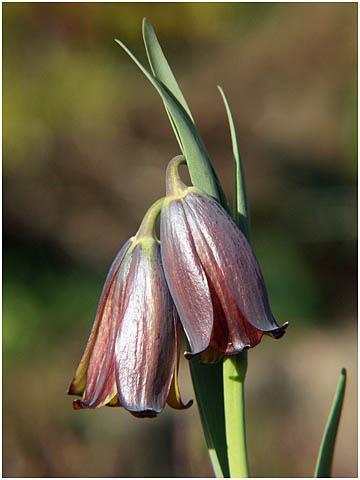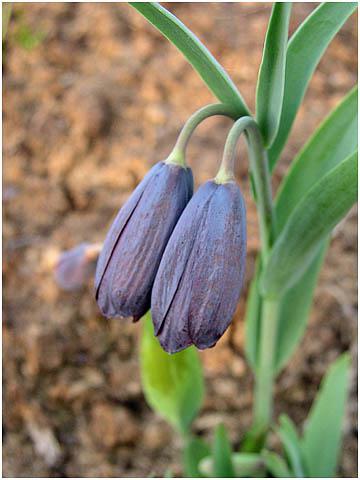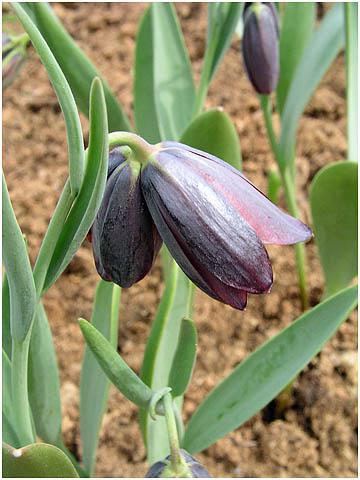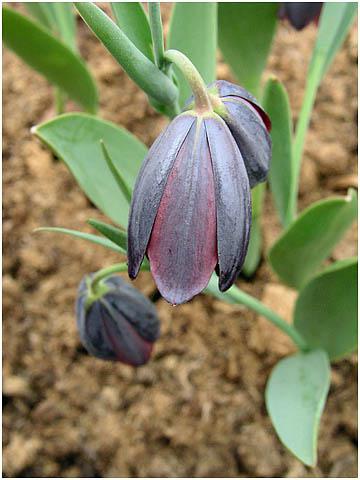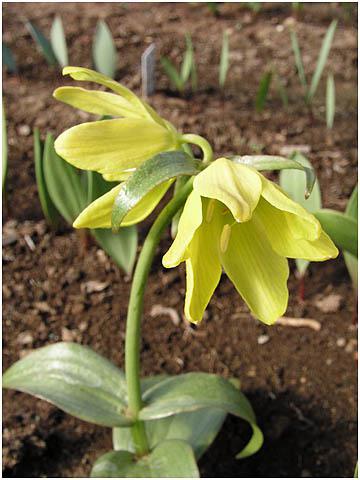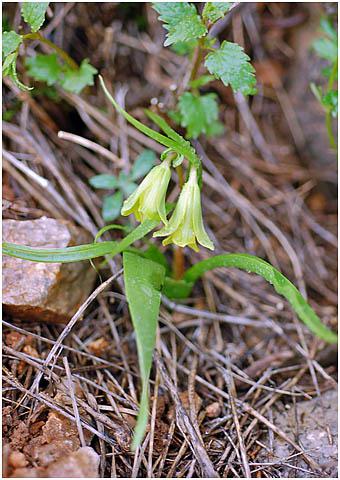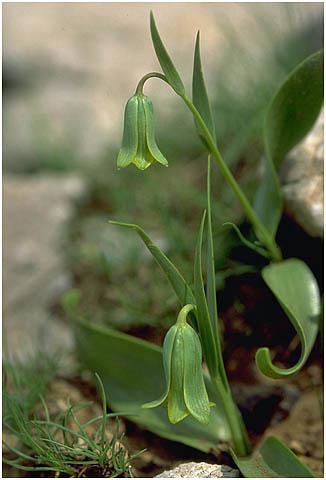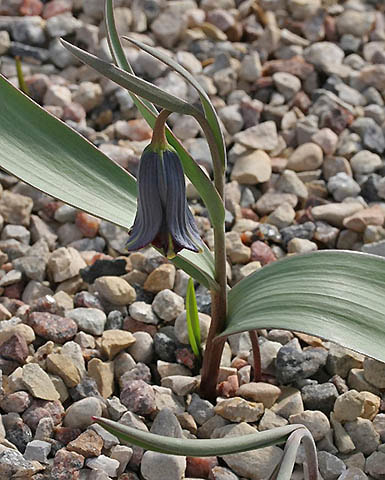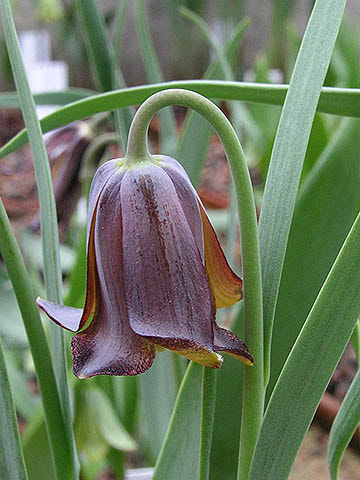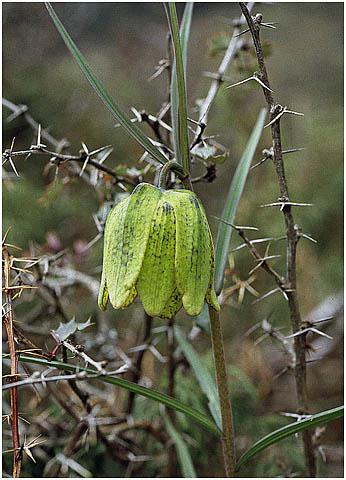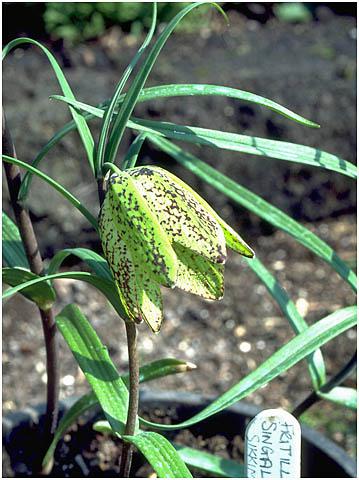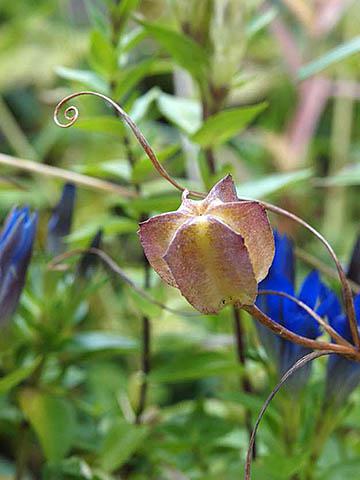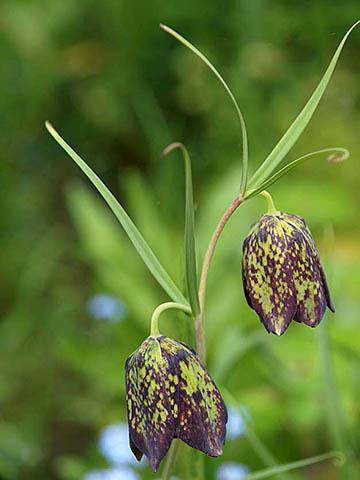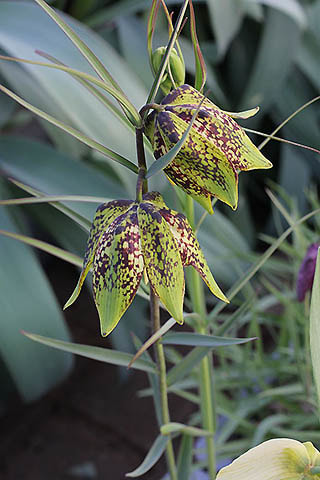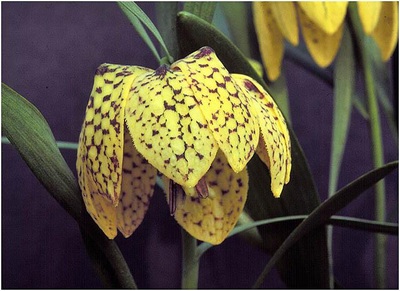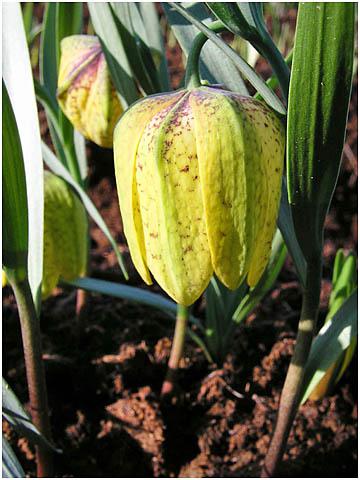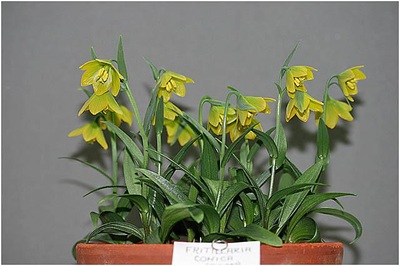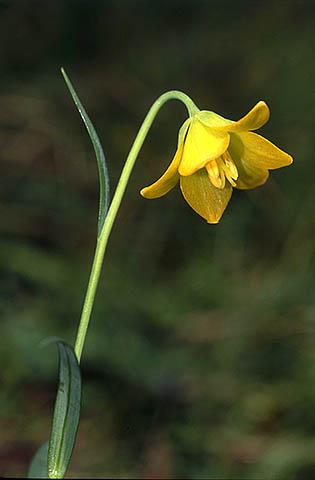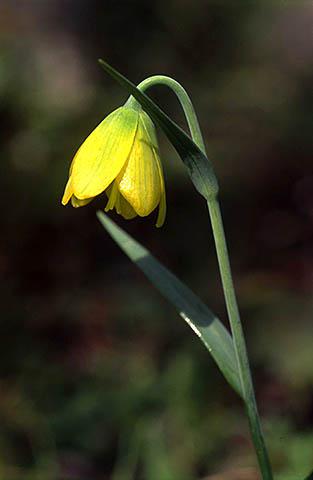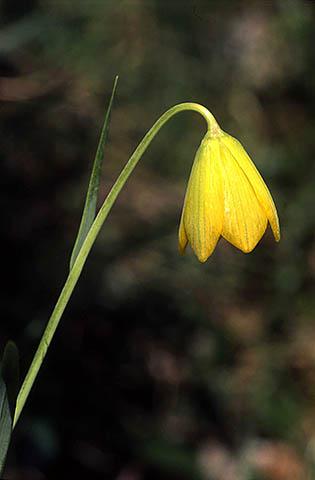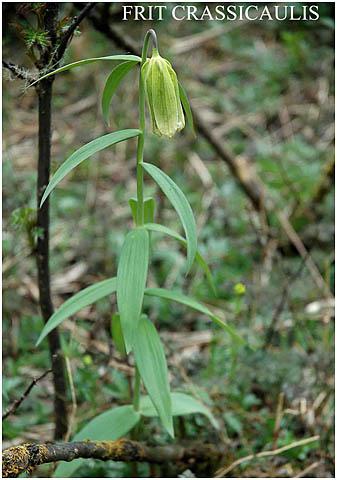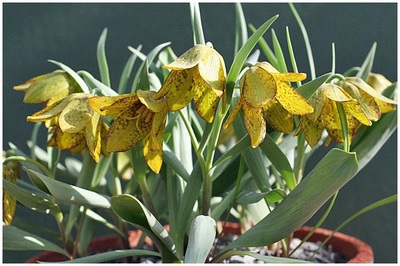COPYRIGHT: All images are © of the respective photographers. THEY MAY NOT BE COPIED AND USED ELSEWHERE WITHOUT PERMISSION.
FRITILLARIA SPECIES: B - C
Each species has been assigned a Cultivation Group, either A, B, C, or D. To view descriptions of these groups, click on Cultivation Groups or scroll to the bottom of this page where they are repeated.
|
Fritillaria baskilensis
|
Sorry, we have no photo of this species. Could you provide one?
|
|
Fritillaria biflora var. ineziana (= Fritillaria grayana). Another
coastal species related to both Fritillaria biflora and Fritillaria liliacea and very like an
intermediate between them. The white
blotch on most forms is characteristic but by no means found in all
populations.
Cultivation Group: A This is one of the easier Californians to cultivate. |
|
Fritillaria bithynica Native to the
west coastal area of Turkey and the adjacent Aegean islands. Note the conical green bells with a long thin
undivided style. Usually the uppermost
leaves are in a whorl of three but some forms, known as Fritillaria pineticola have only
one bract leaf.
Cultivation Group: A |
|
Fritillaria byfieldii This narrow
endemic to Boz Dag in SW Turkey is a scree plant but is not in cultivation.
|
Sorry, we have no photo of this species. Could you provide one?
|
Cultivation Groups
Group A
Those from a Mediterranean-type climate zone at low to medium altitude. The major precipitation is during the winter and early spring but the summer is dry. The bulbs are dormant in summer but often protected from the heat of direct sunlight by tall herbs, shade of trees or by coastal fog.
It is worth trying these in well-drained soil in the open garden but unless your climate is Mediterranean in character, dryness in the summer will usually need to be contrived by overhead protection or planting amongst established, deciduous, shrub or tree roots. These species tend to be straightforward to grow in pots with summer dryness. In the northern hemisphere, watering is best started sparingly from mid-September, increasing once the shoots appear until dormancy sets in in May.
Group B
Those from high altitude and/or inland sites. The major soil moisture in this case is provided by melting snow in the spring and, although occasional thunder storms may occur, the summers tend to be dry but not so hot. In winter the soil is normally covered in snow so the temperature and soil water content is constant for what can be 5 or 6 months of winter during which little growth occurs.
These are normally more difficult in the open garden but can be grown in gritty compost in pots in a cold greenhouse with watering as above. Some benefit from refrigeration in winter in order to maintain dormancy.
Group C
Semi Desert plants. These are from inland sites with cold dry winters, some snowfall, spring snowmelt, and then very dry summers.
In most countries these are not suitable for outdoor cultivation but they grow well in pots in gritty compost under glass. They are best kept dry until early winter when water can be given sparingly until growth appears in spring.
Group D
Those from areas with summer rainfall and cool/cold dry winters. For example, those species from the Himalayas, SW China and NE China, Japan and SE Siberia. These all grow in fairly cool conditions throughout the year, often under protective shade of shrubs or deciduous trees. Snow and snowmelt are important but so is summer rainfall. The main growing season is through spring but root growth can start during the summer, coinciding with the summer rains.
These seem to do quite well in cooler climates grown either in the open garden or in pots of gritty, humus soil, kept outside with perhaps a little protection from excessive winter rain.
Group A
Those from a Mediterranean-type climate zone at low to medium altitude. The major precipitation is during the winter and early spring but the summer is dry. The bulbs are dormant in summer but often protected from the heat of direct sunlight by tall herbs, shade of trees or by coastal fog.
It is worth trying these in well-drained soil in the open garden but unless your climate is Mediterranean in character, dryness in the summer will usually need to be contrived by overhead protection or planting amongst established, deciduous, shrub or tree roots. These species tend to be straightforward to grow in pots with summer dryness. In the northern hemisphere, watering is best started sparingly from mid-September, increasing once the shoots appear until dormancy sets in in May.
Group B
Those from high altitude and/or inland sites. The major soil moisture in this case is provided by melting snow in the spring and, although occasional thunder storms may occur, the summers tend to be dry but not so hot. In winter the soil is normally covered in snow so the temperature and soil water content is constant for what can be 5 or 6 months of winter during which little growth occurs.
These are normally more difficult in the open garden but can be grown in gritty compost in pots in a cold greenhouse with watering as above. Some benefit from refrigeration in winter in order to maintain dormancy.
Group C
Semi Desert plants. These are from inland sites with cold dry winters, some snowfall, spring snowmelt, and then very dry summers.
In most countries these are not suitable for outdoor cultivation but they grow well in pots in gritty compost under glass. They are best kept dry until early winter when water can be given sparingly until growth appears in spring.
Group D
Those from areas with summer rainfall and cool/cold dry winters. For example, those species from the Himalayas, SW China and NE China, Japan and SE Siberia. These all grow in fairly cool conditions throughout the year, often under protective shade of shrubs or deciduous trees. Snow and snowmelt are important but so is summer rainfall. The main growing season is through spring but root growth can start during the summer, coinciding with the summer rains.
These seem to do quite well in cooler climates grown either in the open garden or in pots of gritty, humus soil, kept outside with perhaps a little protection from excessive winter rain.
